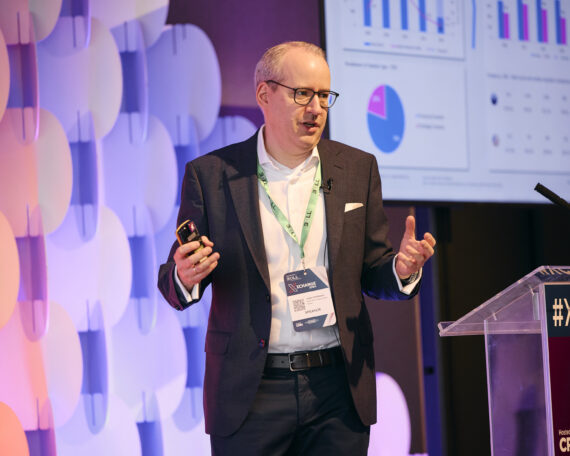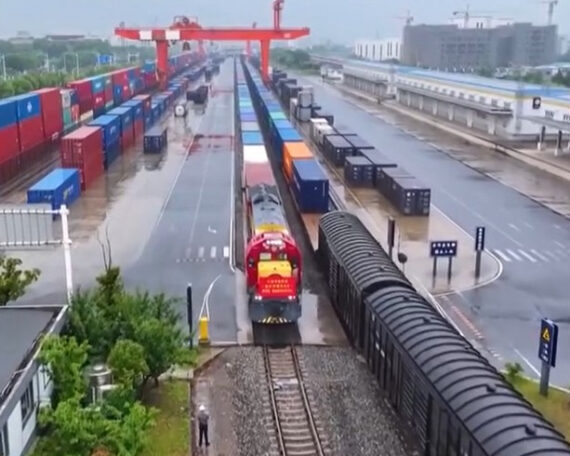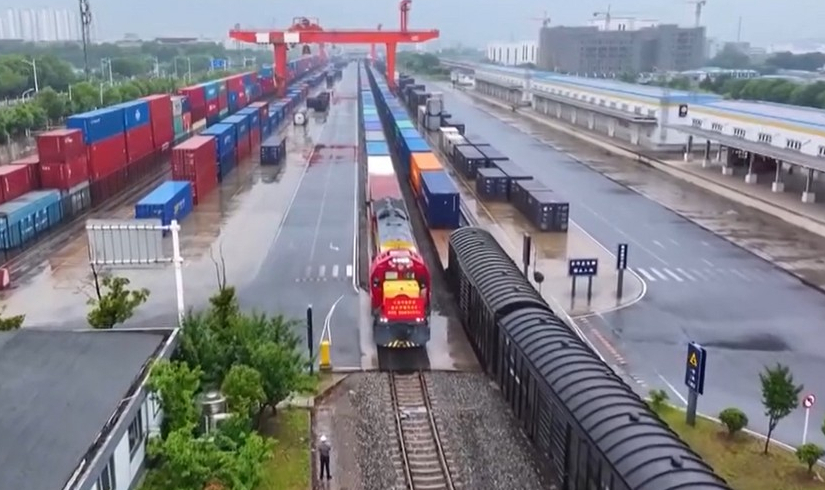Key Discussion points
-
Progressive taxation
-
Social welfare programs
-
Job creation and economic empowerment
-
Access to quality education, healthcare and other services
-
Strengthening labour rights
-
Tackling corruption
In the rapidly evolving digital landscape of today, the convergence between AI (Artificial Intelligence), and cybersecurity has undoubtedly transformed the way that organizations operate and provide services.
Local governments, which are the foundation of public administration and service provision, are not excluded from this paradigm change.
Local governments can improve their service delivery and strengthen their cybersecurity defenses by leveraging the potentials of AI, cybersecurity and neoliberalism, while also embracing the principles of progressive thinking and neoliberalism. This will help them to achieve sustainable development and civic wellbeing.
This paper explores how AI and cybersecurity, combined with neoliberalism, and progressive-minded approach, can elevate the centrality of local government in development efforts.
Neoliberalism can provide local governments with a framework to foster innovation and efficiency in the delivery of services. Its emphasis on free markets and privatization, as well as deregulation, is a good fit for this.
Local governments can use AI to optimize resource allocation and improve service quality by embracing market-oriented solution and public-private partnership.
Neoliberal principles also encourage entrepreneurial initiatives, which can lead to economic growth in local communities. This creates a fertile environment for technological advancements as well as societal progress.
In contrast, progressive-minded approaches emphasize the importance social equity, environmental sustainability and inclusive governance for the pursuit of development.
Local governments can ensure that AI initiatives are geared towards marginalized communities and addressing systemic inequalities. They can also promote social justice by incorporating progressive values into the decision-making process.
In addition, progressive cybersecurity strategies aim to protect digital rights, promote transparency in government operations and protect privacy. They align cybersecurity efforts with democratic principles, empowering citizens and civic empowerment.
The fusion of neoliberalism with progressive-minded roles in the implementation of AI can foster a dynamic, synergistic effect that balances economic efficiency and social equity, inclusivity and security, and innovation with transparency.
Local governments that adopt a dual approach can catalyze development outcomes that are sustainable, empower marginalized groups, and cultivate resilient digital infrastructures that support democratic values and civic engagement.
Local governments can navigate the digital age by embracing both neoliberal perspectives and progressive ones. They can also foster innovation and drive inclusive growth for all segments of society.
In recent years, Nigeria faced significant challenges in income inequality. A disproportionate amount wealth was concentrated in the hands a small portion of the population while many Nigerians continued to live in poverty.
Inequality must be addressed to promote social stability, economic development, and sustainable growth in the country.
To reduce inequality in Nigeria, government can implement a variety of policies and initiatives.
1. Progressive taxation: The Government can introduce progressive tax policies which require those with higher earnings to pay a greater percentage of their income in taxes. This can help redistribute resources and wealth more equitably throughout society.
2. Social welfare programs: Investments in social welfare programs, such as cash transfers and healthcare, education and housing, can help lift people from poverty and provide a safety-net for those who are most vulnerable.
3. Job creation and economic empowerment. The government can prioritize initiatives to create decent and well paying jobs, especially for marginalized groups like women, youth, people in rural areas, and others. This can reduce income inequality and promote empowerment.
4. Access to quality healthcare and education: Providing equal opportunities to all Nigerians, regardless of their socioeconomic background, can help level playing fields and provide equality.
5. Strengthening Labour Rights: Enforcing labor laws, protecting workers rights, and promoting a fair wage can help reduce income disparities, and improve the wellbeing of the workforce.
6. Tackling corruption is crucial for creating a transparent and accountable system, which benefits all Nigerians and not just a select few.
Surprisingly, reducing inequality in Nigeria requires an integrated approach that includes targeted policies and investments. These are necessary to address the causes of inequality and to create a society more inclusive and prosperous for all citizens.
In order to drive innovation and progress in Nigeria, it is crucial that local governments spearhead development initiatives.
Local authorities can improve their abilities and effectiveness by leveraging the synergy between AI, cybersecurity and neoliberalism.
This transformation will not only improve the efficiency of service delivery, but also promote sustainable development and inclusiveness across the nation.
Let’s explore how to make local governments work as a paradigm shift.
It is important to empower local governments in Nigeria to be the drivers for development. This will promote grassroots development, participative governance, and effective services delivery. Strengthening local government can help address the challenges and needs of communities on the grassroots level, and improve the quality of life of Nigerians.
Here are some ways that local governments can be empowered in Nigeria to drive development:
-
Fiscal autonomy: By providing local governments with adequate funding and financial autonomy, they can plan and implement projects that are tailored to the needs of their communities. This can improve service delivery and development of infrastructure at the local level.
-
Capacity-building: Investing into the capacity-building of local government officials can improve their skills in governance and project management. Training programs, workshops and mentorships can equip local governments with knowledge and expertise to lead development initiatives.
-
Devolution of power: Devolving the powers of the federal and state government to local governments allows them to take control of local issues and to own development priorities. This can increase local participation, accountability and responsiveness to needs.
-
Participatory governance: Promoting participative governance processes that involve civil society organizations and other stakeholders can enhance transparency, accountability and inclusivity in the local government operations. Consultative mechanisms, community engagement initiatives, and public hearings can help ensure development efforts reflect the aspirations and priorities of the people.
-
Collaboration and partnerships. Fostering collaboration and partnership between local governments, private entities, non-governmental organisations, and development agencies, can leverage resources, expertise and networks to support initiatives for local development. Public-private partnerships and community-based organizations can help find innovative solutions for local challenges.
-
Monitoring and evaluation: It is important to establish robust monitoring and evaluating mechanisms in order to track progress, measure impacts, and promote accountability for local government activities. This will ensure effective and sustainable outcomes.
Regular assessments, performance evaluations, and feedback mechanisms help identify gaps, address issues, and improve the service quality provided.
By empowering the local governments to be the backbone of development in Nigeria the country can harness its diverse communities’ potential, promote inclusive growth and build a more resilient, prosperous nation.
AI and cybersecurity, however, have the potential of revolutionizing the way local governments function, positioning them as key actors in driving development in Nigeria.
Local authorities can use AI to streamline processes, optimize resources, and make data driven decisions in order to better serve their constituents.
Implementing robust cybersecurity measures will also protect sensitive information and critical infrastructure from cyber threats and vulnerabilities.
These technologies are not only designed to improve the efficiency and effectiveness for local governments, but also empowers them to be leaders in sustainable development within their communities.
AI and cybersecurity are essential in enhancing local governments’ centrality in development. They can do this by improving the efficiency, effectiveness and security of local governance and service provision. Here are some ways that AI and cybersecurity can be beneficial to local governments:
-
AI and data analytics: AI technologies are able to help local governments analyze vast quantities of data in order to identify trends and make informed decisions.
Local governments can use AI algorithms and machine-learning models to better understand the needs of citizens, optimize resource allocation and develop policies and programs that are evidence-based.
-
Enhanced service delivery : AI-powered solutions such as chatbots and virtual assistants can streamline interactions with the citizens, provide real time assistance, and deliver personalized and efficient services. This can improve accessibility, responsiveness and quality of local government services, increasing citizen satisfaction and engagement.
-
Smart infrastructure and urban planners: AI applications support smart city initiatives through optimizing traffic flow and managing energy consumption. They can also predict maintenance needs and plan sustainable development projects. Local governments can optimize resource usage, reduce environmental impact and create more resilient, livable communities by integrating AI into urban planning processes.
-
Security and privacy protection. Cybersecurity measures are essential for safeguarding sensitive information, protecting critical infrastructure and ensuring privacy and security. Local governments can reduce cybersecurity risks by implementing robust cybersecurity protocols and implementing encryption technologies and threat detection systems.
-
AI-driven cybersecurity can help local governments detect cyber threats, respond and mitigate them in real-time. Local governments can identify vulnerabilities and improve their cybersecurity posture by leveraging AI algorithms to detect anomalies, perform behavioral analysis and gather threat intelligence.
-
Engagement and transparency of stakeholders: AI tools facilitate communication, collaboration and engagement between citizens, businesses and other stakeholders. Local governments can promote trust, accountability and inclusivity by leveraging AI-powered platforms to facilitate citizen feedback, participatory decisions, and transparent governance.
AI and cybersecurity can be implemented to empower local governments, improve their capabilities, deliver more efficient and effective services and ensure the sustainability and security of development efforts.
Local governments can use these technologies to promote innovation, resilience and equitable development for their communities.
In conclusion, the integration between neoliberalism, progressive roles, and the deployment of AI, and cybersecurity technologies, offers a comprehensive framework that local governments can use to drive development initiatives, improve service delivery, or fortify their cybersecurity posture.
Local governments can harness the transformative power of AI and cybersecurity by combining market-oriented solutions, social equity principles and entrepreneurial spirit, with democratic values. This will help them achieve sustainable development goals and improve the lives of their citizens.
In the era of digital disruptions, the synergy of neoliberalism with progressive thinking, artificial intelligence, and cybersecurity offers local governments the opportunity to thrive as innovative, adaptive, and inclusive agents of change, in pursuit of a more resilient and equitable future.
=====
The Writer, Professor Ojo Emmanuel Ademola, the first Nigerian professor of Cyber Security and Information Technology Management and the first professor of African descent with Chartered Manager status.
Read More












